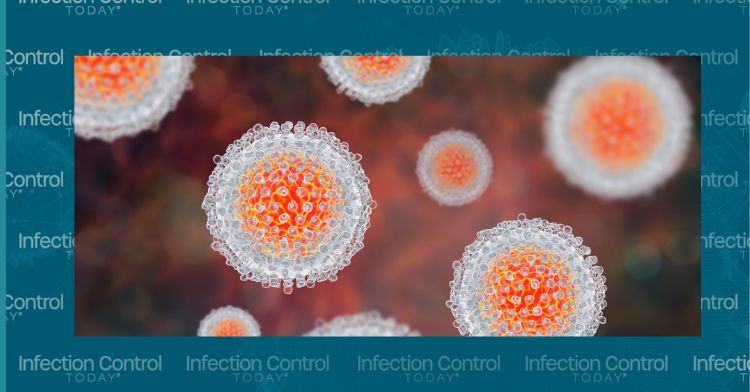CDC Publishes 2 Reports on Hepatitis Incidence Rates and Progress Towards 2025 Goals
Hepatitis C cases increased in 2021, while A and B decreased. The pandemic may have impacted the progress.
Hepatitis
(Adobe Stock 161227058 by Dr. Microbe)

This article first appeared on our sister brand, ContagionLive.
The CDC has published its Viral Hepatitis Surveillance Report – United States, 2021, which details the incidence rates during that period. Although the rates of acute infections decreased for hepatitis A and B, the report’s authors note that the pandemic's effects may not have provided accurate statistics accounting due to various factors. In addition, hepatitis C rates did increase during this time.
In addition, the CDC published its 2023 National Viral Hepatitis Progress Report to offer some perspective on progress toward 2025 outcome goals for new viral hepatitis infections and viral hepatitis–related deaths, overall and for key populations.
Here are some key findings from the reports:
Hepatitis A
For the year observed, 2021, the authors explained that the reported rate of hepatitis A declined for the second year in a row. From 2020–2021, CDC said there was a 43% decrease in incidence. There were a total number of 5728 new cases, corresponding to 11,500 estimated infections.
“By the end of 2021, 14 of 37 states had declared an end to widespread and prolonged hepatitis A outbreaks associated with person-to-person transmission, primarily occurring among persons who use drugs and those experiencing homelessness,” the authors wrote. “These outbreaks demonstrate the importance of surveillance to identify cases and vaccination to prevent and respond to hepatitis A.”
Hepatitis B
For hepatitis B, new virus infections declined in 2020 and 2021. According to the report, 47 states reported 2045 hepatitis B cases, corresponding to an estimated 13,300 infections. The authors report that for years, there were stable rates of hepatitis B infection; however, the rate of infections decreased significantly in 2020, and again, the rate decreased by 14% in 2021.
The authors noted that although the 2 hepatitis B indicators for new infections met the annual target for 2021, they write, “It is difficult to determine to what degree the lower rates are attributable to true reductions in disease burden versus the impact of the COVID-19 pandemic on access to healthcare, hepatitis testing, and health department capacity to perform viral hepatitis case investigations.”
For mortality, the indicators for hepatitis B-related deaths did not meet the annual targets in 2021; however, rates of hepatitis B-related deaths may have been impacted by the increase in overall deaths during the pandemic.
The authors said there is a strong public health need to continue the CDC’s, improve testing, and get people into the continuum of care.
Hepatitis C
The figures on this form of the virus have continued a disturbing pattern. During 2020-2021, the infection rates increased 14%. This is after hepatitis C rates doubled during 2014-2020.
There were 5023 reported cases of hepatitis C (HCV), with 69,800 estimated infections and 43 states reporting 107,540 newly reported cases.
In addition, some other takeaways for people who contracted HCV: injection drug use was the most commonly reported risk factor at 57%.
“The death rates for hepatitis C among non-Hispanic American Indian (AI / Alaska Native (AN) persons and non-Hispanic Black persons were 3.4 times and 1.7 times, respectively, the death rate among non-Hispanic White persons.”This demonstrates the continued challenges amongst these groups.
The Pandemic Effect
The pandemic may have affected incidence numbers. “The findings in this report should be interpreted with caution,” the authors wrote. “The number of viral hepatitis cases reported to CDC in 2020 and 2021 may be lower than in years before the COVID-19 pandemic began. The decrease may be related to fewer people seeking healthcare and being tested for viral hepatitis during the COVID-19 pandemic.”
Newsletter
Stay prepared and protected with Infection Control Today's newsletter, delivering essential updates, best practices, and expert insights for infection preventionists.
Reducing Hidden Risks: Why Sharps Injuries Still Go Unreported
July 18th 2025Despite being a well-known occupational hazard, sharps injuries continue to occur in health care facilities and are often underreported, underestimated, and inadequately addressed. A recent interview with sharps safety advocate Amanda Heitman, BSN, RN, CNOR, a perioperative educational consultant, reveals why change is overdue and what new tools and guidance can help.
New Study Explores Oral Vancomycin to Prevent C difficile Recurrence, But Questions Remain
July 17th 2025A new clinical trial explores the use of low-dose oral vancomycin to prevent Clostridioides difficile recurrence in high-risk patients taking antibiotics. While the data suggest a possible benefit, the findings stop short of statistical significance and raise red flags about vancomycin-resistant Enterococcus (VRE), underscoring the delicate balance between prevention and antimicrobial stewardship.
What Lies Beneath: Why Borescopes Are Essential for Verifying Surgical Instrument Cleanliness
July 16th 2025Despite their smooth, polished exteriors, surgical instruments often harbor dangerous contaminants deep inside their lumens. At the HSPA25 and APIC25 conferences, Cori L. Ofstead, MSPH, and her colleagues revealed why borescopes are an indispensable tool for sterile processing teams, offering the only reliable way to verify internal cleanliness and improve sterile processing effectiveness to prevent patient harm.
The Next Frontier in Infection Control: AI-Driven Operating Rooms
Published: July 15th 2025 | Updated: July 15th 2025Discover how AI-powered sensors, smart surveillance, and advanced analytics are revolutionizing infection prevention in the OR. Herman DeBoard, PhD, discusses how these technologies safeguard sterile fields, reduce SSIs, and help hospitals balance operational efficiency with patient safety.
Targeting Uncertainty: Why Pregnancy May Be the Best Time to Build Vaccine Confidence
July 15th 2025New national survey data reveal high uncertainty among pregnant individuals—especially first-time parents—about vaccinating their future children, underscoring the value of proactive engagement to strengthen infection prevention.